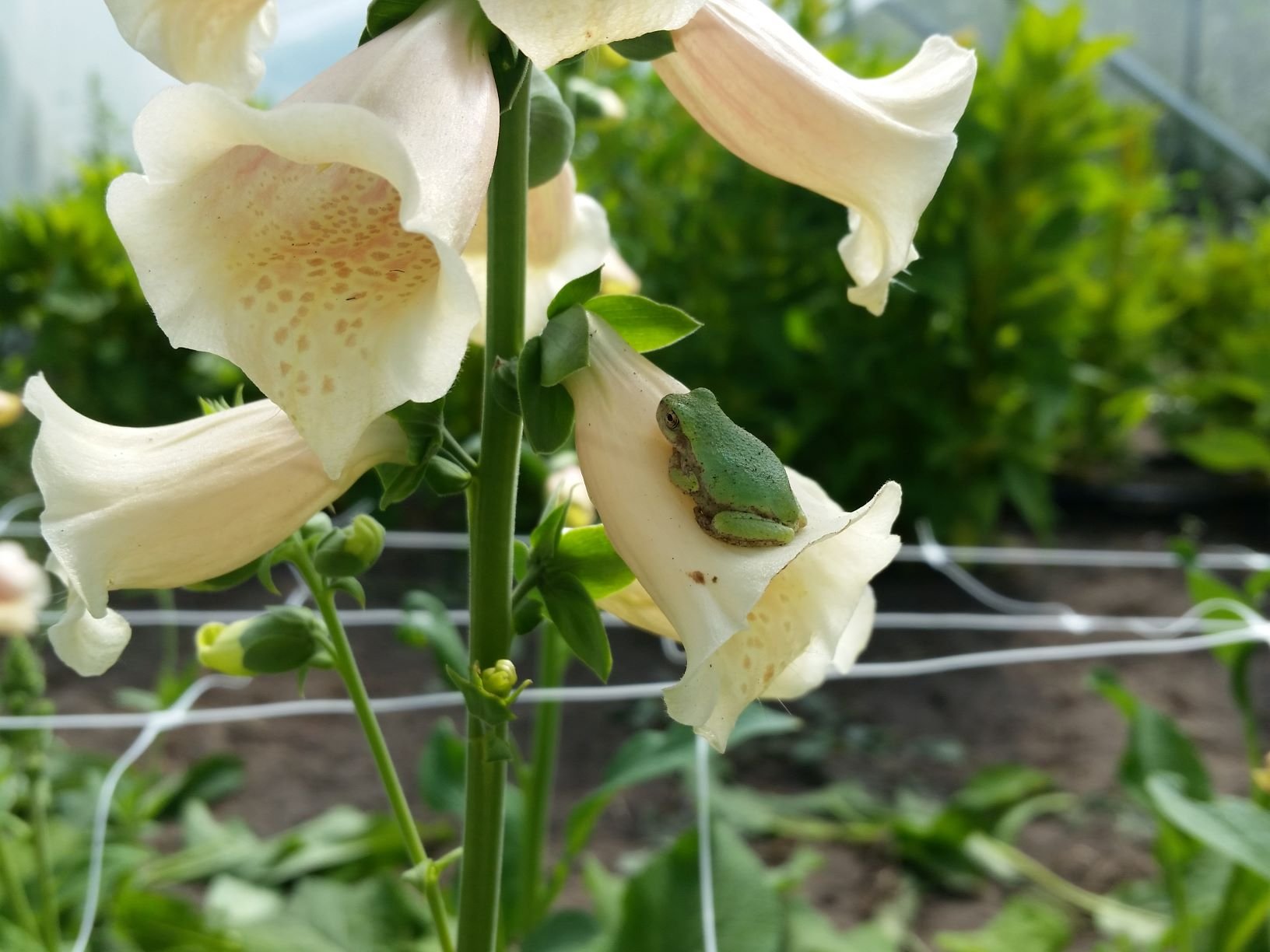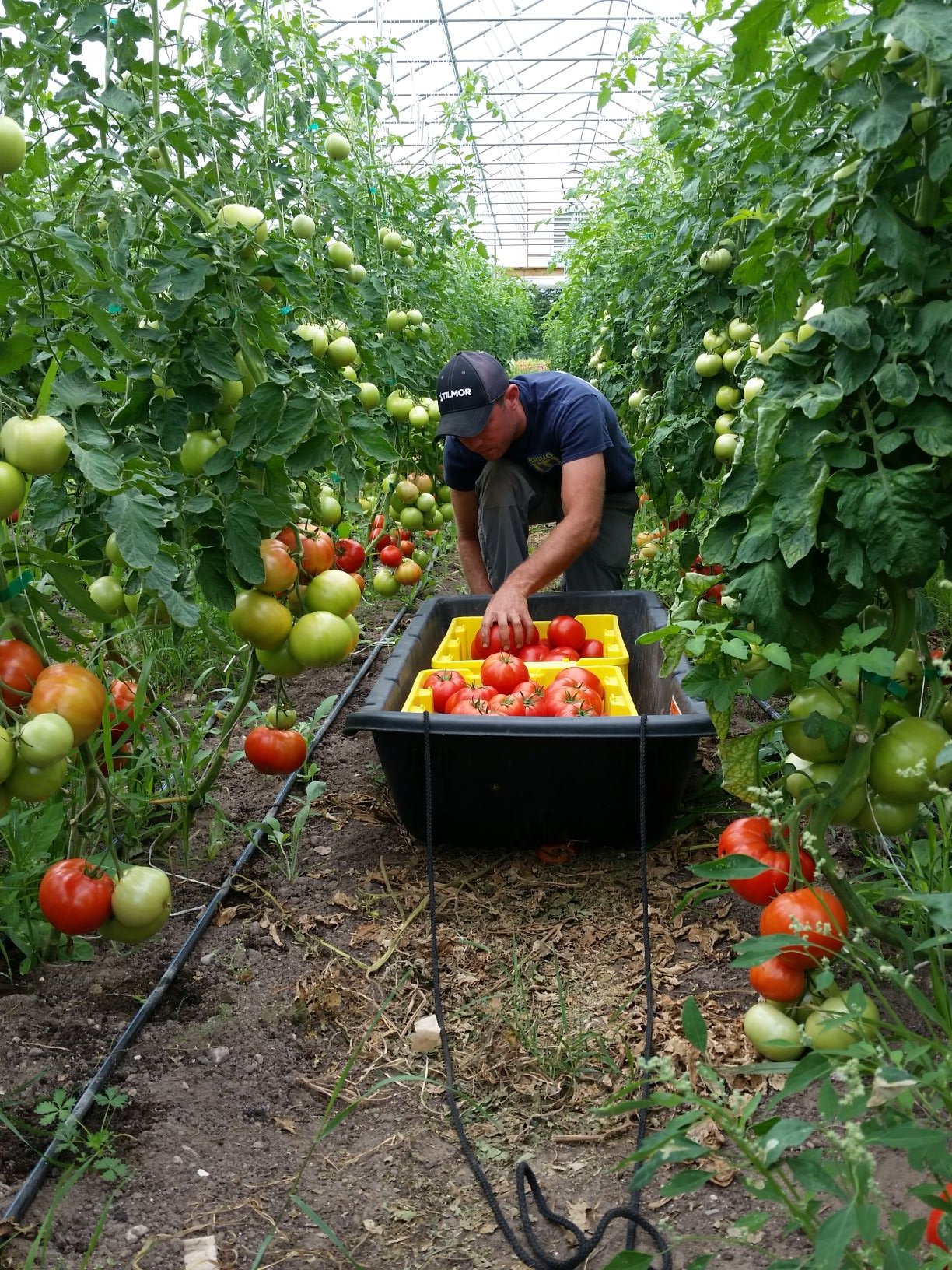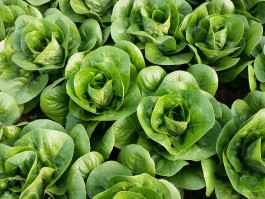Well, it looks like we've made it to August - time sure does fly by. We wanted to take a few minutes to help clarify some things we've encountered over the past couple weeks.
First, if you haven't received things like tomatoes yet, it is because they were still in ramp-up mode; we're hopeful that we'll have plenty to go around starting this week. We have been trying to play it a bit conservative in our estimates as we don't want to come up short and estimating how many cherry tomatoes we'll get out of five day harvest window isn't the easiest task. Obviously, in a perfect world, we'd be able to give everyone the popular crops the first week we have them, but it would result in an incredible excess once they're in full production, so the system resorts to randomly allocating them to boxes until we have enough to go around. Some crops will always be in limited supply for economic reasons - summer broccoli can be incredibly unpredictable; some years we average $2.50-$3 per plant, others (like this year) we average $0.75-$1 per plant which makes it not worth growing. In these types of situations, we prefer to wait until fall when the weather is more advantageous to hope for a more productive crop.
On the other end of the spectrum, if you feel like you're receiving too much of any given veggie, we'd encourage you to reduce your preference rating one or two notches and see if this makes a difference - you can always increase it again later. A rating of five will virtually guarantee if we have enough supply, you'll get it every time we have it, while a rating of one will make sure you never receive it. We know a lot of you haven't put your preferences in simply because you like the surprise, but if you want a little more say in what you get, make sure you have your preferences in and don't be afraid to adjust them if you feel like you're being overwhelmed by something.
We've gotten a lot of feedback from members that would like to hear more about some of our broader farming thoughts like we've discussed in some past weeks versus just what's happening on the farm. Given there isn't anything too incredibly new and exciting on the farm, it seems like a good time to talk about about what has been a topic of conversation on the farm lately and something we think about often - what is the future for local farming? In the past few years, we've been a part of a huge growth in local farming, but we can't help but wonder where it'll go from here and if the direction it's headed is where it should be going. It seems that the local food model is taking a path of extending the availability of crops beyond what many would consider normal. Three years ago, all the farms around here were lucky to have spinach by June and tomatoes by August; it's now expected that we'll have spinach by March and tomatoes by June or July. To do so, we now build $15,000 structures the size of a large house, cover them in massive sheets of plastic and burn propane to heat them during the cool March/April weather. In another three years, are we all going to be heating greenhouses year-round trying to go against all the odds to produce tomatoes by March and spinach year-round? I guess we question what exactly the point of local farming is if we're working so hard to take our local climate out of the farming equation. Local food is sold as a sustainable model, which, it sure has its economic benefits (each $1 spent on local food has a ~$2.50 impact on the local economy) and is still better than large scale agriculture on many fronts, but it sure feels like some of the sustainability is being lost as local food is trying to go mainstream and compete with the grocery store model. In a way, it's no different than bringing chickens in from outdoors because the conditions around them can be better controlled indoors to produce more profitable eggs - something that surely isn't part of the local food trend. Perhaps because it's just vegetables and not animals, its different. Sometimes it feels like instead of celebrating what it is to be local, farms across the country are working tirelessly to turn into year-round grocery stores - the very thing they worked hard to differentiate themselves from in years past.
We obviously live in a tough place to farm this way, so we (as a collective whole) continue to push the bounds and I guess we question where it ends? While it's great to be ambitious, is it realistic to continue to try to push further and further to try to convert every grocery store shopper into faithful farm patrons or are local farms only going to be the 1% of food purchases that they are today no matter how hard farms try? Imagine what an increase to 5% would do - perhaps it's worth all the effort! Is it even possible to operate a profitable farm in our rural area from June through October or is this trend happening out of pure necessity? Are we all just getting caught up in seeing how far we can push just because we can and losing sight of what makes our product local at the end of the day or are our customers actually asking that we continue on this trend and defining a new concept of local?
Perhaps we question things like this a bit more than other local farms because of our long term plan to open a winery; a business which is built around celebrating the uniqueness of the climate that the grapes are grown in and the resulting wine produced from them. It's interesting to see that two local trends are taking such different paths - perhaps because one is a frequent purchase and another is considered more of a luxury item.
While we have more questions than answers, it is something that we discuss often on the farm. Our season is short and farming is expensive; we live in a rural area where 1% of the population translates to well less than 1,000 people and the bills seem to grow as rapidly as the revenue. Perhaps adopting the efficient production methods and extending the availability of local food outweighs the negatives and helps make local farming economically sustainable for the long term. There's obviously something to be said for the direct connection of a local farm and its customers and perhaps the longer into the year that connection can keep going, the greater benefit to everyone - we've sure made a lot of great connections to our customers over our past five years that we otherwise wouldn't have.
Either way, you'll still find us here doing what we do - but it'll sure be interesting to see where things go!




